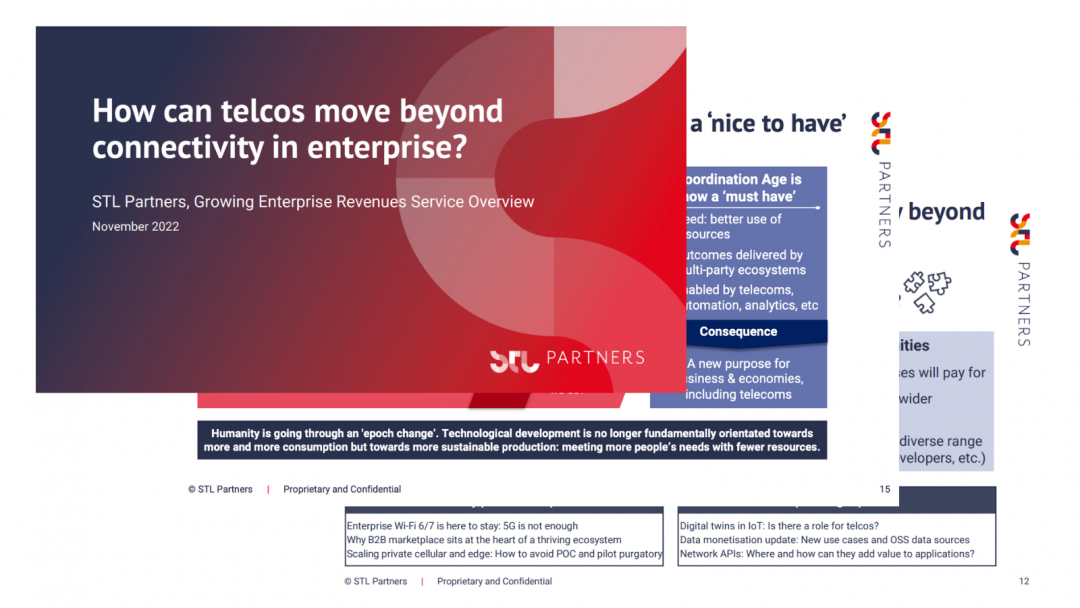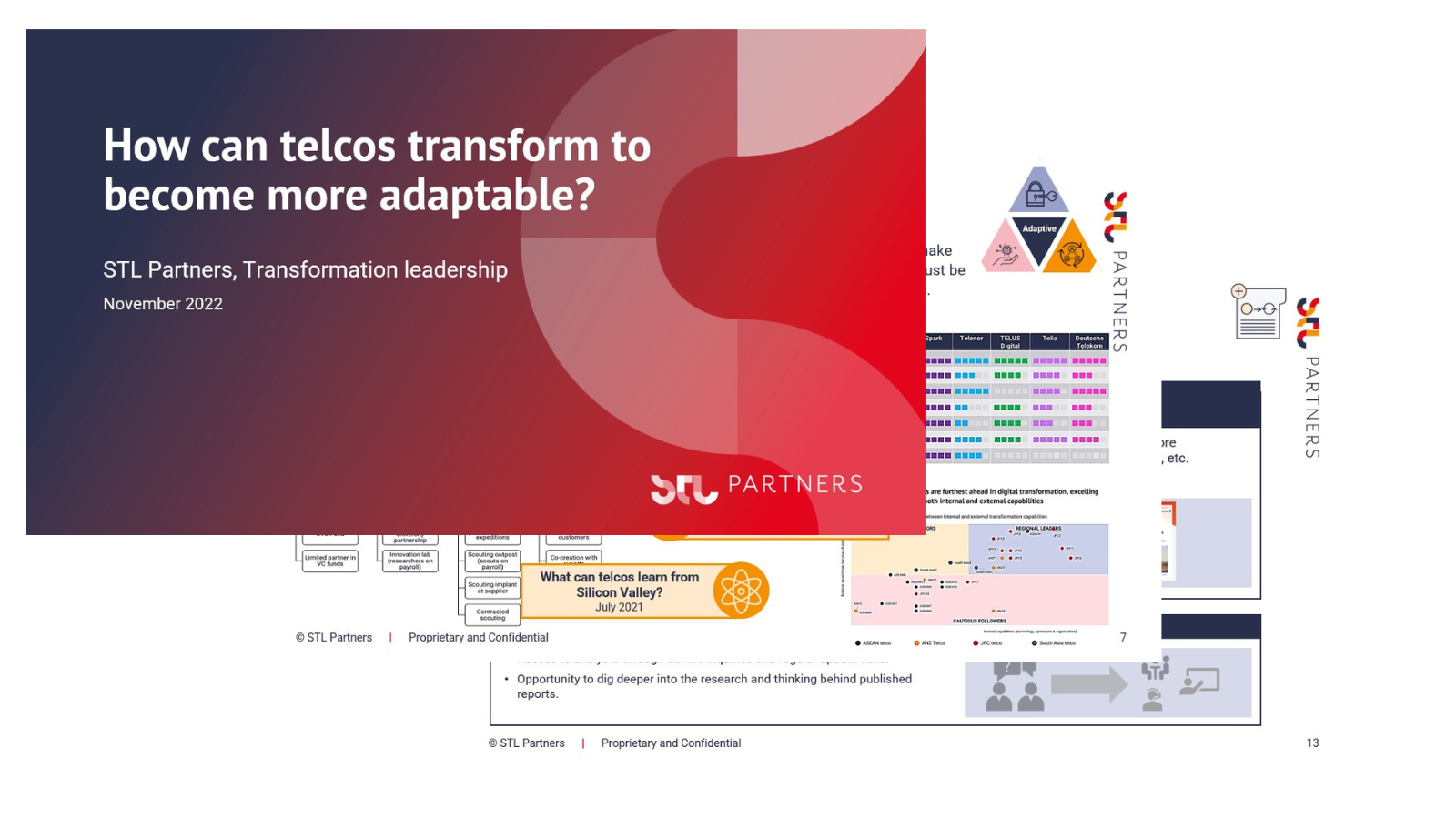
Network APIs: Unlocking new value in the telco cloud
Network APIs may offer an answer to the question of how to monetise recent and upcoming telco cloud deployments. Virtualised networks upgrade APIs and enhance the value they offer to developers and customers. To unlock their potential, telcos should focus on optimising their commercial models.
Network APIs: The promise of increased value capture for operators
The growing hype about network APIs was evident at MWC 2023. In the opening keynote, presentations from Mats Granryd (Director General of the GSMA), José-Maria Álvarez-Pallete (CEO of Telefónica) and Chrystel Heydemann (CEO of Orange) all majored on the GSMA Open Gateway. GSMA Open Gateway is a new initiative bringing 21 of the top CSPs together and offering APIs that leverage the telcos’ network resources via one point of access to developers. There have been other similar initiatives before and they all aim to achieve one thing: to unlock value from network operators’ investments via external agents. For telcos, increased value capture is essential as they have failed to capitalise on the tech boom in recent years due to commoditisation of connectivity and scarce involvement in the application layer that relies so heavily on their networks.
Operators can derive value from the benefits network APIs offer end-users
Network APIs (Application Programming Interfaces), as described in our recent report, ‘Network APIs: Driving new revenue streams for telcos,’ are interfaces that enable third parties to retrieve information about the network or to program and customise the network service based on application needs.
Network APIs can benefit consumers and enterprises in a number of ways:
- Access to raw network data in real-time – This can help upgrade many existing latency sensitive use cases, whilst also enabling application developers to deploy solutions that can leverage multiple CSP access points, reducing the likelihood of failure. This could be particularly useful for smart city applications, where low latency is essential and network dark spots pose a health and safety risk.
- Unlocking new use cases – For example, a virtual reality gaming experience could use network APIs to access real-time player location data and graphics-rendering capabilities at the edge, enabling a more responsive, immersive and safe gaming experience for users.
- Market intelligence – Real time network data can also provide enterprise customers with valuable market intelligence, allowing them to act on it far faster than would otherwise be possible. For example, enterprises with access to footfall data could push outdoor advertising to the areas with most customers, increasing their reach and conversion if combined with customer preference data.
If telcos can execute a successful network API strategy, they can derive value from the benefits their APIs offer, including the following:
- New revenues streams – By providing access to network resources and data for developers, telcos can enable and even co-create new and potentially premium services. This can generate new revenue streams, either from developers paying for the access, or from end users of the services, or both.
- Expanded role in the digital ecosystem – Telcos may be able to use network APIs to expand their role in the digital ecosystem, moving beyond traditional connectivity services to become a key enabler of innovative applications and solutions.
- Deeper customer insights – Network APIs can also enable telcos to gain deeper insights into customer behaviour and preferences, which can be used to develop targeted marketing campaigns and upselling, improve customer support, and deliver more personalised services.
Without telco cloud deployments, we wouldn’t be talking about network APIs today
It is perhaps not obvious at first glance how telco cloud and network APIs relate. In simple terms, and based on what we have just explained, network APIs open a window into the network in order to tap information out of it and / or alter the configuration of the network for a particular user group or application without affecting overall UX. Telco cloud on the other hand means, at its simplest level, the virtualisation of network functions and their underlying infrastructure. So where it exists in the network (a brownfield network typically is not 100% virtualised), telco cloud results in the abstraction of network infrastructure, the creation of a horizontal virtualisation layer, end-to-end visibility on network resources, the ability to run network functions where it makes sense and to program them, including by APIs. So it is this visibility and this elasticity of the network which only exist if virtualisation has taken place that make telco cloud a fundamental pre-requisite for network APIs to function at their best.
In that sense, telco cloud enhances network APIs’ performance and usability for developers. In addition, disaggregation and cloudification, which are two other fundamental pillars of telco cloud, help deliver the following enhancements to network APIs:
- Scalability – virtualised architectures are inherently scalable, allowing telcos to expand their API offerings to accommodate increased demand from developers. This scalability ensures that developers have access to sufficient network resources to build and grow their applications, even as the demand for API-based services increases.
- Programmability and accessibility – CNFs are more programmable, open and flexible by design than VNFs. Furthermore, if CNFs are deployed on a hyperscale cloud, this makes it easier for an app developer using the same cloud provider to program those CNFs, as they are using common orchestration and management tools, and operate on the same hardware and OS environment.
- Innovation – increased programmability and accessibility opens up the network to third-party apps, promoting innovation. Additionally, disaggregated networks and NFs create more opportunities for innovation; and that increases the value of APIs, as they make the job of programming and orchestrating the disaggregated network elements easier.
- Upgradability – disaggregated and cloud-native networks enable faster upgrade cycles (component parts being upgraded independently, without affecting the whole NF or system), which means – if APIs keep pace – the value of them is also enhanced.
Telcos must manage the risks of collaborating to capture value created by network APIs
Opening up networks and making them more cloud-native increases the value that network APIs deliver. They will work better, using larger pools of data and enhancing the efficiency of automation amongst other benefits. Additionally, the data sovereignty delivered by network ownership and the control that telcos have over who has access to their networks presents a strategic advantage for telcos. However, they cannot necessarily exploit their data to create new business models on their own and need to participate in an ecosystem that offers them access to the best app development skills, as well as vertical specific technical and commercial knowledge, so they can create valuable new services.
Opening their networks and participating in an ecosystem with advanced application providers clearly raises the risk of disintermediation, resulting in telcos receiving a smaller share of the pie. This issue could be exacerbated if telcos cede control to supply-side aggregators, such as hyperscalers, who may or may not favour them. Telcos should actively manage these risks and not rely solely on revenue growth from network APIs to compensate for them.
To capitalise on the opportunities presented by network APIs, telcos should pursue a strategy focused on collaborating with other industry players to make APIs interoperable and define distribution models that avoid ceding control to third parties, whilst developing clear and agile commercial models that allow them to spin up new APIs and commercial models quickly
Download this article as a PDF
Read more about growing enterprise revenues
Growing Enterprise Revenues overview pack
Our overview pack explores how the telecoms industry can leverage new business models to meet enterprise customer needs
Telco APIs and Open Gateway: You can’t make an omelette without breaking some eggs
This article provides an assessment of where the market is to date post-MWC Barcelona, and what telcos can do to accelerate the opportunity.
Progress in telco cloud: How do we measure agility?
In the January 2023 update to our Telco Cloud Deployment Tracker, which was looking back at the entirety of calendar year 2022, we recorded an overall slowdown in deployments.
Network Futures overview pack
Our Network Futures Service provides a roadmap for new network ownership, regulation and partnership models, and insights. into new technologies, industry dynamics and new players.





